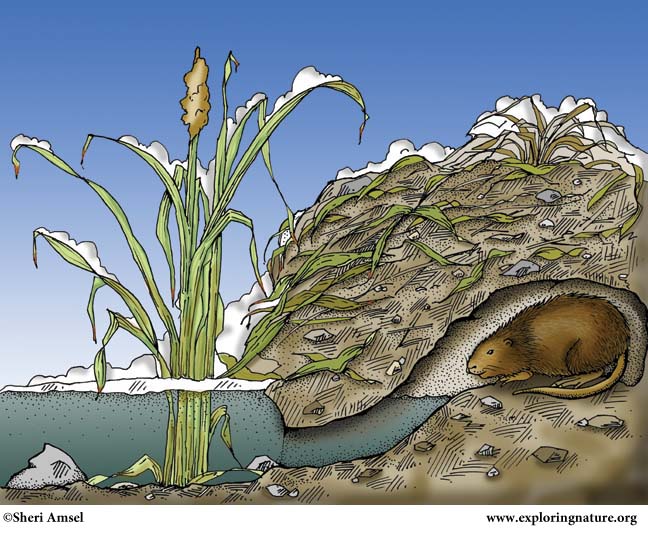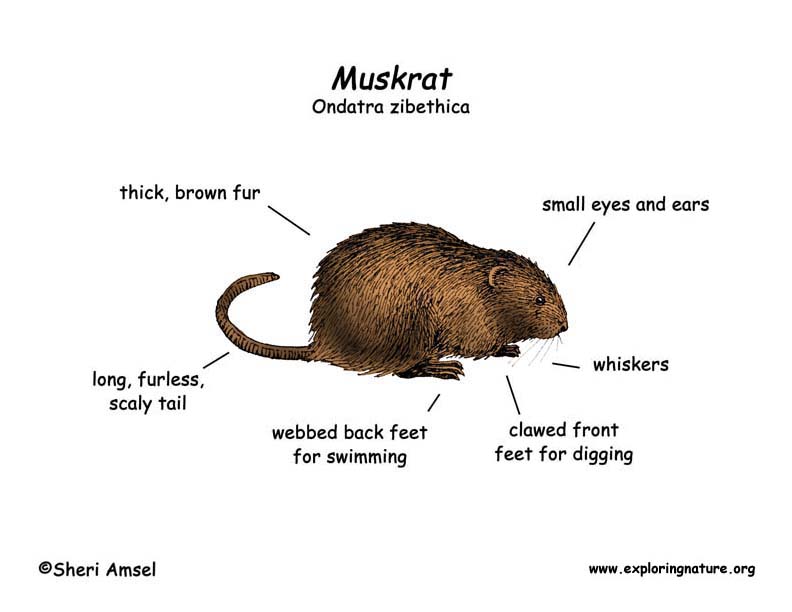

The muskrat is found throughout North America to the Mexican border. They have been introduced to Europe and Asia.
Muskrats are found in wetlands; swamps, marshes, ponds and lakes. They prefer marshes that keep 4 - 6 feet of water year round.
They are about 20-inches long including their hairless, scaly tail. They have dense brown fur and partially webbed back feet for swimming. (Not fully webbed like the American beaver.)
Muskrats can stay underwater for 15 minutes without coming up for air. They may be active day or night (but are mostly nocturnal). In winter, they do not hibernate. In a river habitat, they build a bank den and burrow. In a lake or marsh habitat, they build "hut" with an underwater entrance. The top is above the waterline providing a breathing vent. This provides habitat for other animals and protects them from hunting predators.
Muskrats eat plants and roots (herbivores).
They are an important food source for many predators, such as fox, coyote, lynx, eagles, hawks, etc.
Females are pregnant for 1 month (gestation), having about 6 young.
They live about 3 years in the wild. They are listed as Lower Risk - least concern.
Kingdom: Animalia
Phylum: Chordata
Subphylum: Vertebrata
Class: Mammalia
Order: Rodentia
Suborder: Myomorpha
Family: Cricetidae
Subfamily: Arvicolinae
Genus: Ondatra
Species: Ondatra zibethicus
When you research information you must cite the reference. Citing for websites is different from citing from books, magazines and periodicals. The style of citing shown here is from the MLA Style Citations (Modern Language Association).
When citing a WEBSITE the general format is as follows.
Author Last Name, First Name(s). "Title: Subtitle of Part of Web Page, if appropriate." Title: Subtitle: Section of Page if appropriate. Sponsoring/Publishing Agency, If Given. Additional significant descriptive information. Date of Electronic Publication or other Date, such as Last Updated. Day Month Year of access < URL >.
Amsel, Sheri. "Muskrat" Exploring Nature Educational Resource ©2005-2024. December 13, 2024
< http://www.exploringnature.org/db/view/355 >

